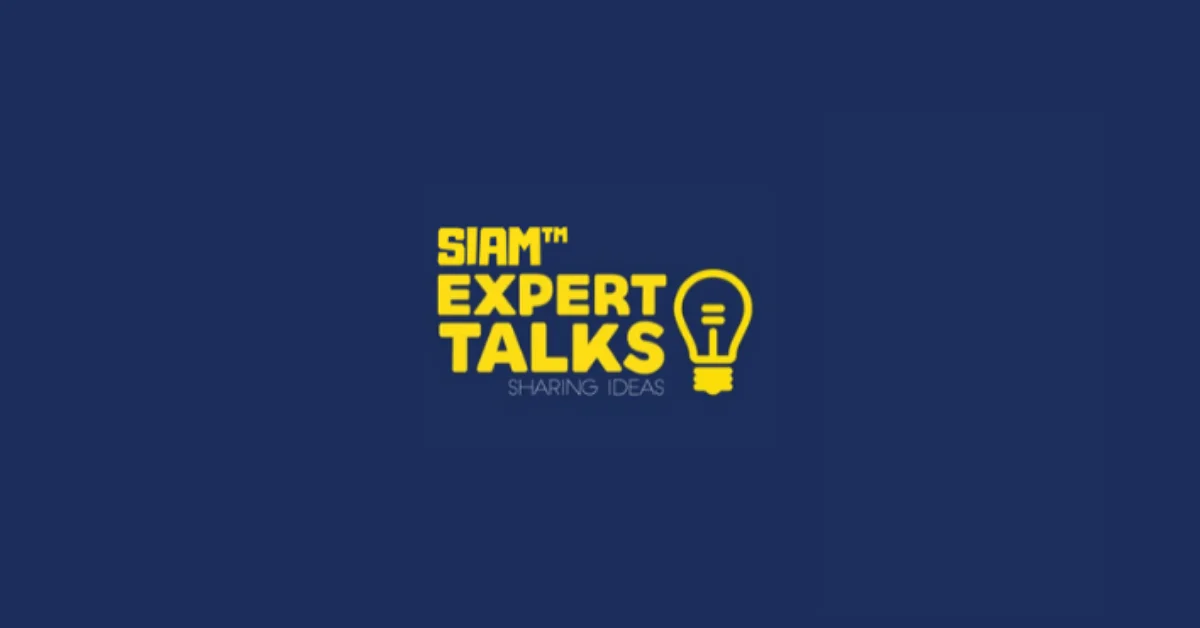Enroll Now and Get Upto 30% Off
* Your personal details are for internal use only and will remain confidential.

Last updated 27/09/2024

Expert Tips: 2 importants tips to get your dream interview call
Lets see whats experts' advice to choose best model for your organization:
"Based on the nature of the SD job, it is best suited to work as part of SIAM and is the first consumer and supporter of SIAM services. So the ticket handshake mechanisms, supplier interactions, supplier KBs and communications. Most happens at SD level and thus SD needs to be enabled by SIAM. When both are together, the multi-suppler challenges are identified and sorted faster and immediately helps improve user experience, and KPIs.
The challenge is that most often SIAM gets dragged to level down and SD responsibilities get pushed on SIAM. And for all the other SD challenges, often SIAM gets blamed too.
So the model has to be rightly setup with right resources, clarity on roles, expectations should be clearly setup and the performance measures should be clearly defined."
"For us, service desk is an integral part of SIAM as CX starts from here. We can route the issues correctly and improve FCR and there by improve experience of customers. Also Service Desk can help navigate complex tickets across the supplier ecosystem which will again influence CX and improve resolution."
"I wrote this for Service Desk Institute "Age of SIAM" some time ago, hope it's of some help. My view in nutshell is The Service desk remains a part of SIAM but there has to be a paradigm shift in way we see SD for regular engagement. With SIAM SD has to be seen more as an aggregator of services for Enterprise Service Management, not just IT organization. For instance, with most of the ITSM tools offering capability for SIAM and extending their portfolio to Enterprise service management (For functions like HR, Finance, etc). It's imperative to develop SD for enterprise needs as well, and SIAM is the right platform for that.
SD must be included in SIAM, but it has to be seen with chat bots and other automated engagement methods. With advent of these new age tools, SD can only be relevant, if it's not just IT but enterprise."
"Service desk is an integral part of SIAM operationalization and eventual success. They are first point of contact and face of IT to internal and external vendors. So it is important to educate and train them to coordinate SIAM effectively. Challenges can be immense if SD is not educated and trained on SIAM."
"Point of SIAM implementations is to bring value to the customer and Service desk is where you can measure it. So Yes !!!"
"Basic purpose of SIAM is to have end user satisfaction of services and not just green SLA, and SD is first point of contact for end users, which needs to be empowered with right skills and processes and having SD with SI partner will enable that empowerment and true results of SIAM can be realized.
Challenge would be to keep right amount of workload to SD team with clear separation of responsibilities which mainly can cause issue when given ticket or issue is cutting across multiple towers/suppliers which SI has to manage with right OCM strategies."
"Except bandwidth and skilled leader, everything else are pros. We did wonders when we made SD inclusive in the game of orchestration."
"TService Desk provisioning by SI will have distinctive advantage as SD, being the initial touchpoint for end user, would be able to gain more insights on cross service provider experiences, issues, end user experiences, etc."
"From my experience Service desk should be an integral part of Service integrator. SIAM supports SD in resolving critical and long aged issues by orchestrating with other parties. Similarly, service desk provides key inputs to SIAM for improving overall customer experience. An isolated service is no service at all, and in order to deliver an overall customer experience it is important that all parties work as a team. SIAM must integrate service desk into their engagement model to enable seamless delivery.
Poor implementation of SIAM governance model leads to lack of coordination and blame game, service desk is an area which is highly prone to misses and non compliances and SIAM must take accountability to improve on this."
"The first impression is the best impression, as it is told. Imagine having a world class SIAM team with exceptionally competent support groups, and, finally being leg down by SD. For business customers, SIAM or tech teams do not exist, or, are of no interest. SD is the first line of interaction with customer and should be handled with appropriate care.
SD being part of SIAM makes lot more sense. As mentioned earlier by most of you, there should be a clear understanding of boundaries and scope, without which Siam can end up being saddled with issues that should have been resolved by the SD."
"SIAM is about integrating people, process and tools. As SIAM relies on a lot of component for its success, the Service Desk is one such crucial moving part. The Service Desk has to remain at the centre (Services refractor) for all the interactions for the users.
Besides being a function, it plays the pivotal role of clubbing requests and incidents for various suppliers. Being a single point of contact (SPOC) the Service Desk has to behave as an integration mechanism for various Suppliers and their processes as well."
"Since SD is the 1st face for users they play a pivotal role in SIAM engagement hence should be part of SI group. SD should be empowered enough with right resources (tools/access), correct process knowledge as per the agreed SIAM framework, the support scope/SOW of different suppliers, etc; as not following the correct processes at the initial level of the ticket logging process, the outcome of SIAM implementation will be questioned by client."
"There can be four permutations and combinations in this scenario:
In this option, one haa a distinct advantage as an integrated SD will go well with the concept of SIAM being able to provide end to end service performance transparency and the ability for SI to influence the SD outcomes in a better manner which may positively influence the end-user experience.However, with an able and skillful SI provider supported with well-defined and targetted contract framework,the other three options also practical to contemplate.
In fact the biggest disadvantage, in my view on the first option is that in a SIAM ecosystem, SD also needs to be considered as another supplier. Integrating SD with Service Integrator may compromise the neutrality required in the ecosystem. Unless SI provider is matured enough to build Chinese wall and practically administer it."
"Within a SIAM model, the service desk acts as a ‘single source of truth’ for consumer satisfaction and provides important management information about service performance. If the service integrator is not providing the service desk, it must work very closely with it and use the service data it provides."
The service desk plays an important role in the day to day contact with the consumers of the service, providing crucial metrics around satisfaction, both quantitative and qualitative, for the service integrator. There is no best option for the service desk but there are a range of advantages and disadvantages to consider.
In this option, the customer organization retains the provision of the service desk function, usually alongside an internal service integrator. The rationale for the customer organization providing the service desk is usually related to a desire for control and the benefit of internal business knowledge, shared values and culture, or where it already has an established, mature service desk capability.
There may, however, be specific reasons for the customer organization to retain the service desk in-house, such as legal or regulatory requirements in e.g. the defense industry, where sensitive information is not allowed to leave the customer organization.
In this option, the external service integrator provides the service desk. The service integrator acts as a lead supplier, as through the service desk it also provides a service.
This structure can provide a good alignment between the service desk and the service integrator and will typically be chosen when the organization acting as the external service integrator has an additional, mature capability to provide the service desk. Where the external service integrator directly provides the service desk, these advantages and disadvantages should be considered.
The service desk is considered a service like any other as part of a SIAM model. Service providers in this space may bring specific expertise, tooling, flexibility, agility and scaling that would otherwise be difficult to achieve.
In this option, different service providers provide their own service desks and toolsets and the service integrator provides a consolidated view. This is only an effective choice where it is clear to the consumers of the services which service desk to contact for support. For example, the payroll department can contact the service desk of the financial application provider directly.
Note that often, different service providers have their own existing service desk. These service provider service desks can provide a second level escalation point for the service desk supporting the users of the services within the SIAM model. Allowing the SIAM model’s consumers to access multiple service desks removes the single point of contact and can create confusion.
Service Integration and Management (SIAM®) Professional Body of Knowledge.
India’s leading and Globally 1st Training Service Provider of SIAM Professional. NovelVita’s SIAM training focuses on Pre-sales (what services to sell to the customer from SIAM Perspective), Transition (How to design SIAM Process) & Operations (How to run SIAM Deals in operations) areas with real-time case studies and examples. Contact us on: manish@novelvista.com for more information of SIAM Training & Certification areas.
Manish has more than 13 yrs of experience in IT Industry and has worked as ITIL Head with expertise in the areas like Enterprise IT Transformation, ITSM, SIAM, Blockchain.
* Your personal details are for internal use only and will remain confidential.